
An Essay on the Delusion of Safety
The Illusion of Safety: Embracing a Reality of Risk
Primary Category: Editorial & Commentary
Author:
• Tim McGuinness, Ph.D., DFin, MCPO, MAnth – Anthropologist, Scientist, Polymath, Director of the Society of Citizens Against Relationship Scams Inc.
Author Biographies Below
About This Article
Risk pervades daily life, from private choices to global events, yet it need not erase meaning or agency. A clear split between controllable and uncontrollable risks provides direction: health habits, financial safeguards, and verification steps sit within influence, while disasters, wars, and an offender’s intent do not. Philosophical lenses offer workable habits of mind. Aristotelian practice builds character through steady action. Stoicism centers on response over outcome. Existentialism creates purpose through service. Buddhism calms attachment to perfect safety. Kantian duty protects truth and consent. Taoism moves with conditions to reduce friction. Pragmatism tests what works and updates. Bayesian thinking refines beliefs as evidence arrives. Confucian roles share responsibility. Epicurean clarity trims needless fear. Phenomenology grounds attention in lived experience. Pyrrhonian skepticism loosens certainty when data are thin. Utilitarian care weighs impact for the many. Together, these stances align with how the brain learns, helping people act wisely, keep boundaries, and recover steadiness over time.
Note: This article is intended for informational purposes and does not replace professional medical advice. If you are experiencing distress, please consult a qualified mental health professional.

The Illusion of Safety: Embracing a Reality of Risk
The Illusion of Safety
The concept of safety serves as a necessary anchor in our lives, a comforting delusion for individuals, especially those who have suffered the trauma of scams, providing a semblance of stability in a world that feels chaotic and unpredictable.
Yet, a deeper understanding reveals that safety, as people commonly perceive it, represents a delusion.
The human experience unfolds within an inherently unsafe universe, where threats lurk at every scale, from cosmic upheavals to personal betrayals.
This essay invites everyone, from scam victims and the general public, to explore this reality, recognizing that the brain constructs a version of the universe designed for survival rather than an accurate reflection of its dangers.
By looking into how this curated perception shapes daily life and evolves into cognitive distortions, this aims to empower readers with greater awareness that all that we see or seem, is not what we think it is.
The Recognition of Safety
The recognition of safety as a delusion begins with understanding the brain’s protective mechanisms. Neurologically, the brain processes sensory information through the thalamus, filtering it via the cortex to create a manageable picture of reality. This editing process prioritizes survival, sifting out the overwhelming complexity of an unsafe universe to allow for planning and action. However, it also has a flaw; when risks are too great, they become overwhelming and cannot be processed.
For individuals reeling from the trauma of scams, the brain may heighten reliance on familiar patterns, such as trusting the wrong people or falling back into even greater vulnerabilities, as a means to regain control after financial or emotional loss. Psychologists note that this selective perception emerges from a need to avoid paralysis, enabling people to navigate daily challenges despite surrounding perils. However, this curated reality distorts the true nature of existence, creating a persistent belief that safety exists as a constant state, rather than a temporary respite amid constant risk. This foundational delusion shapes how individuals interact with the world, often setting the stage for further misjudgments.
The Brain’s Curated Reality
The brain does not allow individuals to see reality as it truly exists but instead paints a picture tailored to support functioning in an inherently dangerous environment.
This neurological process involves the integration of sensory data, where the thalamus relays information to the cortex for interpretation, yet the brain selectively emphasizes elements that align with preferred survival instincts. For those who have experienced the betrayal of scams, this mechanism might amplify trust in established routines or relationships, seeking to restore a sense of order after disruption. The limbic system, particularly the amygdala, plays a key role in this process, heightening alertness to potential threats while the prefrontal cortex filters out excessive fear to maintain focus. Psychologists explain that this editing serves a vital purpose, preventing individuals from becoming overwhelmed by the constant presence of danger, whether from natural forces or human malice.
However, this curated reality comes at a cost, as it obscures the full scope of risks that permeate life. The brain’s tendency to prioritize stability over truth creates a comforting illusion or delusion, convincing individuals that their environment offers more security than it actually does. This protective strategy enables daily activities, work, relationships, and rest, but leaves people vulnerable to overlooking subtle dangers, such as the persuasive tactics of criminals. The neurological basis for this illusion lies in the brain’s adaptive nature, evolving to balance survival with sanity in a world where threats abound. By understanding this process, individuals can begin to see through the distortion, acknowledging the unsafe universe while learning to function within it, a critical step for scam victims seeking to rebuild trust and agency.
The Transformation into Cognitive Biases and False Beliefs
As the brain’s curated reality takes hold, it gradually transforms into cognitive biases, logical fallacies, and false schemas or beliefs that shape how individuals perceive and respond to the world.
Cognitive biases, such as confirmation bias, lead people to favor information that reinforces their belief in a safe environment, dismissing warning signs that might indicate a scam or other risks. This selective attention stems from the brain’s effort to maintain a coherent narrative, even when evidence suggests otherwise. Logical fallacies, like the fallacy of control, emerge as individuals convince themselves that effort alone can master all outcomes, a belief that shatters when confronted with the unpredictability of fraudulent schemes. These distortions solidify into false schemas, such as the idea that financial stability ensures emotional security, a notion that scam victims may cling to despite repeated evidence to the contrary. Learn more about cognitive biases here.
Neurologically, this transformation involves the interplay between the amygdala, which drives fear and emotional responses, and the prefrontal cortex, which governs rational thought. Together, they reinforce familiar patterns, prioritizing comforting delusions over uncomfortable realities. Psychologists observe that these biases, fallacies, and beliefs serve as coping mechanisms, helping individuals navigate a threatening world without succumbing to constant anxiety. For scam victims, this might manifest as an overreliance on past trust, making them targets for future exploitation. The process illustrates how the brain’s protective intent can inadvertently perpetuate vulnerability, as these delusions obscure the true nature of risk. Recognizing this dynamic offers a pathway to challenge false assumptions, encouraging a more grounded approach to personal safety and decision-making.
A Spectrum of Risks
Life presents a vast array of risks that challenge the illusion of safety, spanning from the grandest cosmic events to the most intimate personal threats. The following list encompasses sixty real risks that individuals encounter, reflecting the breadth of potential harm in an inherently unsafe universe:
Supernova explosion
Gamma-ray burst
Asteroid impact
Solar flare disruption
Black hole collision
Cosmic radiation exposure
Galactic superwave
Dark energy acceleration
Planetary collision
Climate change catastrophe
Global pandemic
Volcanic supereruption
Earthquake destruction
Tsunami inundation
Hurricane devastation
Tornado outbreak
Flooding disaster
Wildfire spread
Nuclear war
Chemical weapons attack
Biological warfare
Terrorist assault
Civil unrest escalation
Government oppression
Economic collapse
Cyber warfare attack
Power grid failure
Water supply contamination
Food chain disruption
Air pollution crisis
Space debris collision
Artificial intelligence malfunction
Genetic engineering mishap
Nanotechnology accident
Mass migration conflict
Resource depletion war
Cultural extinction
Religious persecution
Identity theft scheme
Online scam exploitation
Physical assault incident
Domestic violence episode
Automobile accident
Airplane crash
Train derailment
Medical error
Prescription drug overdose
Food poisoning
Allergic reaction
Chronic disease progression
Mental health breakdown
Suicide risk
Addiction relapse
Financial ruin
Relationship betrayal
Loneliness isolation
Sleep deprivation effects
Physical injury
Aging deterioration
Sudden cardiac event
This partial list highlights the omnipresence of danger, reminding individuals that no aspect of life remains immune to potential harm. The diversity of these risks underscores the universal challenge of living with uncertainty, a reality that demands both awareness and adaptation.
Which of the above have you already experienced? As an exercise, sit down and write the list of threats you have personally faced in your life, not just those above, but those not included as well. Try to write them all and see if you are not surprised at how many you have already survived. Maybe you are a survivor after all?
Controllable vs. Uncontrollable Risks
Distinguishing between controllable and uncontrollable risks provides a practical framework for navigating life’s uncertainties, especially for those who have already faced profound existential risk.
Controllable risks encompass personal choices that individuals can influence, such as maintaining mental health through therapy and counseling, maintaining physical health through diet and exercise, securing personal finances against theft, or practicing safety measures like wearing seatbelts. These actions empower people to mitigate specific dangers, offering a sense of agency that proves especially valuable for scam victims seeking to reclaim control after exploitation. By focusing on these areas, individuals can reduce vulnerability to certain threats, building resilience through proactive steps.
Uncontrollable risks, by contrast, lie beyond human influence, encompassing cosmic events like asteroid impacts, natural disasters such as earthquakes or hurricanes, and societal upheavals like wars. These forces operate on scales that defy individual intervention, requiring acceptance rather than mastery. For scam victims, the initial deception falls into this category, as the scammer’s intent and actions remain outside their control. However, the response, seeking support or reporting the incident, shifts into the controllable realm, transforming helplessness into action. This distinction encourages a balanced approach, where effort focuses on what can change while embracing the limits of what cannot, promoting a healthier relationship with risk.
Philosophical Answers for Living with Risk
Living in the face of such a wide array of risks invites philosophical reflection, offering pathways to sustain hope and purpose.
Aristotelian virtue ethics frames risk as a training ground for character. Courage, prudence, and temperance guide choices that avoid recklessness and cowardice while still moving life forward. Practically, small, repeated acts of wise exposure strengthen judgment, while the brain consolidates these habits into faster, more balanced responses through rehearsal and reflection.
Bayesian epistemology treats belief as degrees of confidence that update with data. Risks are never all-or-nothing; they are estimates refined by new evidence. This mindset encourages checklists, pre-commitments, and transparent priors, aligning with how the brain learns from prediction errors and adjusts expectations.
Confucian philosophy centers risk within relationships and roles. Trustworthy conduct, ritual clarity, and mutual obligation distribute hazard across families, institutions, and communities. Predictable norms reduce uncertainty, and social regulation buffers stress responses, allowing thoughtful action instead of panic.
Epicureanism distinguishes necessary from unnecessary fears. By clarifying which risks can truly injure and which are imagined, it frees attention for friendship, modest security, and steady pleasure. This cognitive sorting reduces catastrophic thinking and helps the body exit chronic stress cycles.
Existentialism complements this perspective by asserting that meaning arises from creating purpose amid chaos. Individuals can craft significance through actions like educating others about scams, transforming personal pain into a collective benefit. Neurologically, this aligns with the brain’s plasticity, where repeated positive behaviors rewire neural pathways, gradually reducing fear responses. Buddhism offers another lens, suggesting that suffering stems from attachment to illusions, including the belief in unwavering safety. By releasing this delusion, individuals practice mindfulness, observing risks without being overwhelmed, which might involve scam victims meditating on lessons learned to find peace amid loss.
Kantian deontology emphasizes duties that do not bend to convenience. Truthfulness, respect for persons, and fair rules matter even under threat. Treating people as ends leads to clear boundaries, informed consent, and refusal to exploit fear, which stabilizes decision-making and reduces amygdala-driven shortcuts.
Nietzschean perspectivism holds that valuations of risk arise from perspectives that can be examined and strengthened. Life affirmation means choosing projects that justify danger through creation and growth. Training resilience reframes stress as a signal of becoming, engaging motivational systems that support disciplined courage.
Phenomenology returns to lived experience to understand how risk appears in the body, time, and attention. Naming sensations, narratives, and contexts clarifies what is actually present. Grounded awareness reduces projection, builds tolerance for ambiguity, and opens space for deliberate action.
Pragmatism asks what works in practice and stays open to revision. Hypotheses about risk are tested in lived experience, then updated when evidence changes. This stance mirrors neuroplastic learning, where feedback loops refine strategies, from two-channel verification to staged exposure that steadily lowers false alarms.
Pyrrhonian skepticism suspends judgment when evidence is insufficient, reducing overconfidence on both hope and fear. Acting on appearances with light grip, it avoids dogma while remaining responsive. The result is less rumination and cleaner perception, which lowers reactivity in uncertain conditions.
Stoicism teaches individuals to concentrate on what rests within their power, attitudes, efforts, and responses, while accepting what lies beyond, such as the unpredictability of natural disasters or human malice. This acceptance does not suggest resignation but cultivates resilience, encouraging scam victims to rebuild trust gradually through community connections. The philosophy empowers people to find strength in their capacity to adapt, turning challenges into opportunities for growth.
Taoism invites alignment with the grain of events rather than forceful control. Flexible action, timely nonaction, and simplicity reduce friction and secondary harm. Nervous systems benefit when effort flows around resistance, using calm routines that downshift physiological arousal and preserve energy for decisive moves.
Utilitarianism evaluates risk by expected impact on well-being for the greatest number. It supports actions that reduce aggregate harm, such as prevention programs, platform reporting, and safer payment defaults. This approach aligns with probabilistic thinking, where the prefrontal cortex weighs likely outcomes and nudges behavior toward policies with the largest net benefit.
These philosophies converge on the idea that life’s value emerges from active engagement, not avoidance of danger. The brain’s tendency to craft a safe picture, while a survival tool, invites a shift in perspective, encouraging individuals to embrace vulnerability as a shared human condition. Through this awareness, scam victims and the public discover the strength to live fully, weaving the illusion of safety into a tapestry of purposeful action. Risks, rather than sources of fear, become catalysts for growth, fostering a life rich with meaning despite an unsafe universe.
Conclusion
Risk touches every part of life, yet it need not define a life. People can influence what they can control from what they cannot. Health habits, financial hygiene, and verification steps sit on the side of control. Earthquakes, wars, and a scammer’s intent sit on the side of limits. The practical aim is simple. Spend energy where change is possible, record what happens, and accept that some forces remain outside personal reach.
The philosophies surveyed point to the same center. Aristotelian practice builds steady character through small, repeated choices. Stoic focus returns attention to response, not outcome. Kantian duty protects truth and consent when fear rises. Taoist ease reduces wasted effort by moving with conditions. Pragmatism tests what works, then updates. Bayesian thinking refines beliefs as facts arrive. Confucian roles share risk across families and institutions. Epicurean clarity trims needless fear. Existential resolve makes meaning through service. Phenomenology grounds perception in lived experience. Pyrrhonian patience loosens the grip of premature certainty. Utilitarian scope widens care to the many.
Neuroscience adds a usable frame. Attention, rehearsal, and measured exposure calm reactivity over time. Checklists, two-channel verification, and pauses before payment align with how the brain learns. For those harmed by fraud, this approach restores agency without denying pain. A report filed, a log kept, and a boundary set are modest acts that compound.
Meaning does not require a safe universe. It grows as people act with care, keep clean rules, and refine judgment in public view. In this light, risk becomes information, not a verdict. Communities that prize truth, fair process, and shared responsibility help everyone stand steadier. The destination stays open, yet the direction is clear. Attend to what can change, accept what cannot, and keep learning together.

Glossary
- Authenticity of Limits — This concept recognizes that some forces remain outside personal control, such as natural disasters or an offender’s intent. Clear acceptance helps direct effort toward actions that can change outcomes, like documentation and safe payment habits. Practically, it reduces wasted energy and calms frantic decision-making.
- Amygdala — This brain structure helps detect threat and triggers fast emotional responses. After exposure to deception, it may fire quickly, amplifying fear and urgency. Naming this pattern supports calmer choices while the body settles.
- Aristotelian Virtue Ethics — This tradition treats risk as practice for character. Repeated, modest acts of courage, prudence, and temperance strengthen judgment over time. Habits formed in ordinary moments often carry people through crises.
- Bayesian Updating — This mindset treats beliefs as estimates that adjust when new evidence appears. It favors checklists, independent confirmations, and clear assumptions. Small updates made often lead to better risk decisions.
- Boundary Setting — This skill defines what contact, requests, and behaviors are acceptable. Firm, simple limits prevent pressure from pushing people into unsafe actions. Consistent boundaries also protect energy during recovery.
- Cognitive Bias — This term describes mental shortcuts that can distort judgment. After a scam, the brain may favor familiar stories and overlook warnings. Learning common biases improves everyday risk choices.
- Confirmation Bias — This bias favors information that supports a preferred belief. It can hide red flags by giving extra weight to comforting details. Intentional exposure to disconfirming facts balances decisions.
- Confucian Roles — This lens views risk through duties in families and communities. Predictable roles, clear norms, and mutual care reduce chaos. Shared responsibility spreads load during stressful events.
- Curated Reality — This phrase describes how the brain edits incoming information to keep life manageable. The edit supports daily functioning but may hide subtle dangers. Awareness of this edit invites deliberate verification before moving money or trust.
- Decision Log — This tool records dates, amounts, counterparties, and reasons for actions. Writing choices down reduces confusion and supports later reports. Logs also reveal patterns that can be improved.
- Epicurean Clarity — This approach separates real harms from imagined fears. Attention returns to friendship, modest security, and steady routines. The shift quiets catastrophic thinking and lowers stress.
- Existential Resolve — This stance creates meaning through chosen actions when life feels uncertain. Teaching others, reporting crime, or helping a peer turns pain into purpose. Purposeful acts stabilize attention and mood.
- Fallacy of Control — This error assumes effort alone can master every outcome. It collapses when facing another person’s hidden intent. Recognizing limits prevents unfair self-blame and supports practical planning.
- Financial Hygiene — This phrase covers simple, repeatable money protections. Examples include two approvals for large transfers, separate devices for banking, and pauses before refunds. These habits reduce exposure without constant fear.
- Grounded Awareness — This practice returns attention to actual sensations, facts, and timelines. It replaces imagined threats with what is present and verifiable. Calm noticing opens room for better options.
- Illusion of Safety — This belief suggests the world is secure by default. The brain may maintain this belief to function, even when risks are present. Seeing the illusion clearly encourages measured safeguards.
- Kantian Duty — This view centers on truthfulness, consent, and fair rules regardless of pressure. It refuses manipulation and respects people as ends, not means. Clean rules steady choices under stress.
- Limbic System — This network, including the amygdala, manages emotion and threat detection. It can stay heightened after betrayal, coloring neutral cues as risky. Routine, sleep, and clear boundaries help it settle.
- Neuroplasticity — This capacity allows the brain to change with practice. Small, repeated safety behaviors become easier and faster over time. Training the routine builds confidence without bravado.
- Phenomenology — This approach studies experience as it is lived in the body and time. Describing sensations and context reduces projection and guesswork. A clear description supports clear action.
- Pragmatism — This stance tests what works and updates when results change. It treats safety steps as experiments with feedback. Flexibility keeps protections current and useful.
- Prefrontal Cortex — This brain region supports planning, impulse control, and verification. Under pressure, it can be bypassed by fast emotional circuits. Short pauses and written checks bring it back online.
- Pyrrhonian Skepticism — This view suspends firm judgment when evidence is thin. It avoids overconfidence in both hope and fear. Acting lightly on appearances reduces rumination and panic.
- Resilience — This quality describes the capacity to regain steadiness after stress. It grows through sleep, social support, and small wins that restore agency. Steady routines matter more than dramatic gestures.
- Risk Hygiene — This term means simple, everyday habits that reduce harm. Examples include device updates, skeptical links, and independent callbacks. Clean habits beat complicated fixes for most people.
- Risk Literacy — This skill reads probability, uncertainty, and trade-offs in plain terms. It separates controllable choices from uncontrollable events. Better reading of risk leads to calmer action.
- Schemas — These mental templates organize expectations about people and events. After a scam, some schemas may falsely equate confidence with honesty. Updating templates with facts lowers repeat exposure.
- Selective Perception — This process favors details that support a preferred story. It helps daily functioning but may hide small inconsistencies. Intentionally checking the parts that feel least comfortable improves accuracy.
- Stoicism — This philosophy asks people to focus on their own responses, not outcomes. It encourages calm effort where influence exists and acceptance where it does not. The practice reduces shame and restores dignity.
- Taoist Alignment — This view seeks movement that fits conditions rather than force. Flexible timing and simple steps lower friction and secondary harm. Quiet effectiveness often protects better than struggle.
- Thalamus — This relay station routes sensory signals to the cortex for interpretation. It helps filter complexity so tasks remain doable. When overwhelmed, the filter can miss or misweight signals, so pauses help.
- Two-Channel Verification — This method confirms requests through a second, independent path. A published number, an in-person visit, or a known portal serves as the check. The practice blocks many fraud-induced transfers.
- Uncontrollable Risk — This category includes forces no individual can change, such as earthquakes or a criminal’s private choices. Effort shifts from prevention to response, documentation, and support. Acceptance shortens the path to useful action.
- Utilitarian Scope — This lens weighs choices by their likely effect on overall well-being. It supports policies that reduce harm at scale, such as safer defaults and faster reporting routes. Broad benefit guides resource use.
- Warning Sign Recognition — This skill notices patterns like urgent refunds, third-party payees, or rapid account changes. Early detection increases the chances of stopping loss. Training attention to these cues pays off.
- Window of Action — This term describes the short period when recalls or blocks remain possible. Fast, precise reporting during this window raises recovery odds. Prepared details make speed workable.
- Workable Controls — This phrase refers to protections that people will actually use. Examples include spending caps, approval partners, and locked refund rules. Practical controls outperform perfect ideas left idle.
Author Biographies
Please Rate This Article
Please Leave Us Your Comment Below
Also, tell us of any topics we might have missed.
-/ 30 /-
What do you think about this?
Please share your thoughts in a comment above!
ARTICLE RATING
TABLE OF CONTENTS
CATEGORIES
U.S. & Canada Suicide Lifeline 988
![NavyLogo@4x-81[1] An Essay on the Delusion of Safety - 2025](https://scamsnow.com/wp-content/uploads/2025/04/NavyLogo@4x-811.png)
ARTICLE META
One Comment
Leave A Comment
Important Information for New Scam Victims
- Please visit www.ScamVictimsSupport.org – a SCARS Website for New Scam Victims & Sextortion Victims.
- SCARS Institute now offers its free, safe, and private Scam Survivor’s Support Community at www.SCARScommunity.org – this is not on a social media platform, it is our own safe & secure platform created by the SCARS Institute especially for scam victims & survivors.
- SCARS Institute now offers a free recovery learning program at www.SCARSeducation.org.
- Please visit www.ScamPsychology.org – to more fully understand the psychological concepts involved in scams and scam victim recovery.
If you are looking for local trauma counselors, please visit counseling.AgainstScams.org
If you need to speak with someone now, you can dial 988 or find phone numbers for crisis hotlines all around the world here: www.opencounseling.com/suicide-hotlines
Statement About Victim Blaming
Some of our articles discuss various aspects of victims. This is both about better understanding victims (the science of victimology) and their behaviors and psychology. This helps us to educate victims/survivors about why these crimes happened and not to blame themselves, better develop recovery programs, and help victims avoid scams in the future. At times, this may sound like blaming the victim, but it does not blame scam victims; we are simply explaining the hows and whys of the experience victims have.
These articles, about the Psychology of Scams or Victim Psychology – meaning that all humans have psychological or cognitive characteristics in common that can either be exploited or work against us – help us all to understand the unique challenges victims face before, during, and after scams, fraud, or cybercrimes. These sometimes talk about some of the vulnerabilities the scammers exploit. Victims rarely have control of them or are even aware of them, until something like a scam happens, and then they can learn how their mind works and how to overcome these mechanisms.
Articles like these help victims and others understand these processes and how to help prevent them from being exploited again or to help them recover more easily by understanding their post-scam behaviors. Learn more about the Psychology of Scams at www.ScamPsychology.org
SCARS INSTITUTE RESOURCES:
If You Have Been Victimized By A Scam Or Cybercrime
♦ If you are a victim of scams, go to www.ScamVictimsSupport.org for real knowledge and help
♦ SCARS Institute now offers its free, safe, and private Scam Survivor’s Support Community at www.SCARScommunity.org – this is not on a social media platform, it is our own safe & secure platform created by the SCARS Institute especially for scam victims & survivors.
♦ Enroll in SCARS Scam Survivor’s School now at www.SCARSeducation.org
♦ To report criminals, visit https://reporting.AgainstScams.org – we will NEVER give your data to money recovery companies like some do!
♦ Follow us and find our podcasts, webinars, and helpful videos on YouTube: https://www.youtube.com/@RomancescamsNowcom
♦ Learn about the Psychology of Scams at www.ScamPsychology.org
♦ Dig deeper into the reality of scams, fraud, and cybercrime at www.ScamsNOW.com and www.RomanceScamsNOW.com
♦ Scam Survivor’s Stories: www.ScamSurvivorStories.org
♦ For Scam Victim Advocates visit www.ScamVictimsAdvocates.org
♦ See more scammer photos on www.ScammerPhotos.com
You can also find the SCARS Institute’s knowledge and information on Facebook, Instagram, X, LinkedIn, and TruthSocial
Psychology Disclaimer:
All articles about psychology and the human brain on this website are for information & education only
The information provided in this and other SCARS articles are intended for educational and self-help purposes only and should not be construed as a substitute for professional therapy or counseling.
Note about Mindfulness: Mindfulness practices have the potential to create psychological distress for some individuals. Please consult a mental health professional or experienced meditation instructor for guidance should you encounter difficulties.
While any self-help techniques outlined herein may be beneficial for scam victims seeking to recover from their experience and move towards recovery, it is important to consult with a qualified mental health professional before initiating any course of action. Each individual’s experience and needs are unique, and what works for one person may not be suitable for another.
Additionally, any approach may not be appropriate for individuals with certain pre-existing mental health conditions or trauma histories. It is advisable to seek guidance from a licensed therapist or counselor who can provide personalized support, guidance, and treatment tailored to your specific needs.
If you are experiencing significant distress or emotional difficulties related to a scam or other traumatic event, please consult your doctor or mental health provider for appropriate care and support.
Also read our SCARS Institute Statement about Professional Care for Scam Victims – click here
If you are in crisis, feeling desperate, or in despair, please call 988 or your local crisis hotline.
More ScamsNOW.com Articles
A Question of Trust
At the SCARS Institute, we invite you to do your own research on the topics we speak about and publish. Our team investigates the subject being discussed, especially when it comes to understanding the scam victims-survivors’ experience. You can do Google searches, but in many cases, you will have to wade through scientific papers and studies. However, remember that biases and perspectives matter and influence the outcome. Regardless, we encourage you to explore these topics as thoroughly as you can for your own awareness.





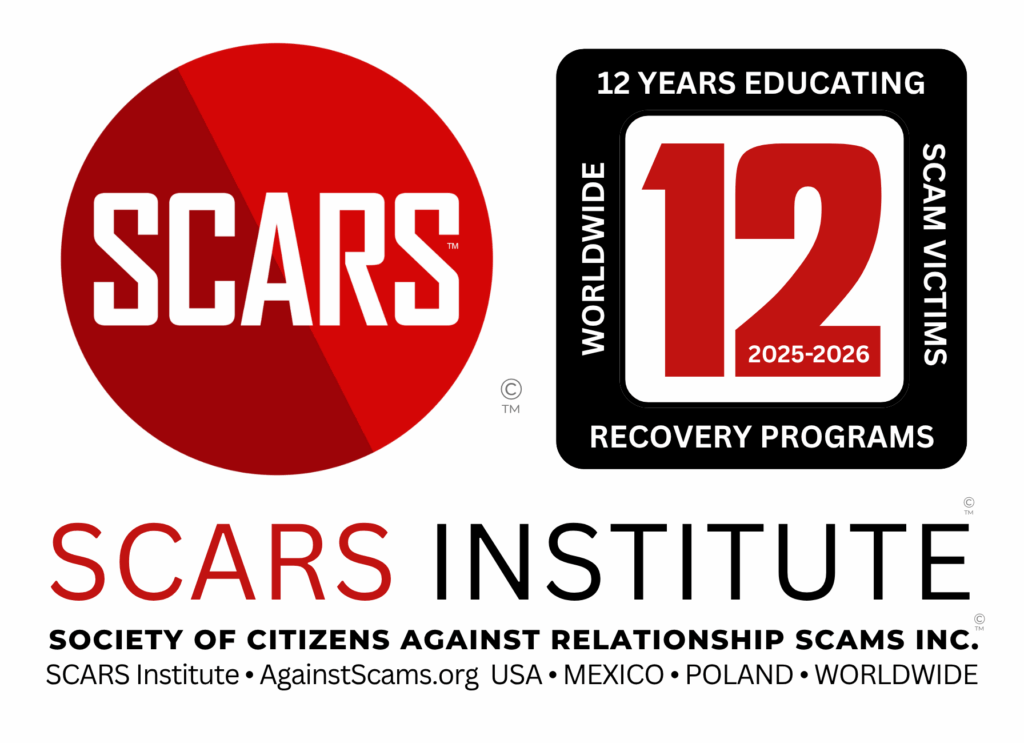

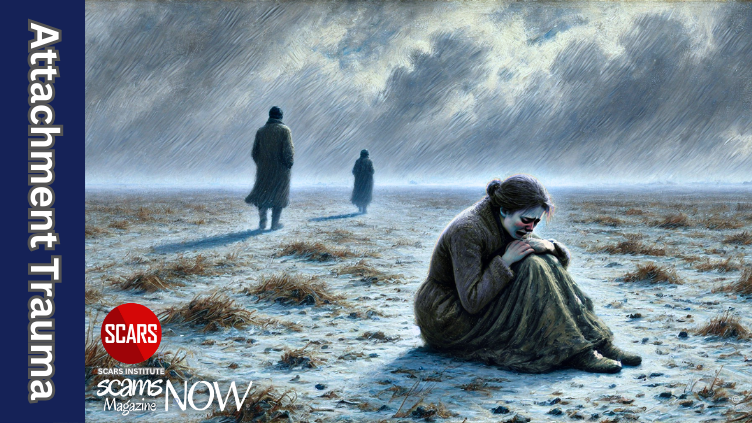


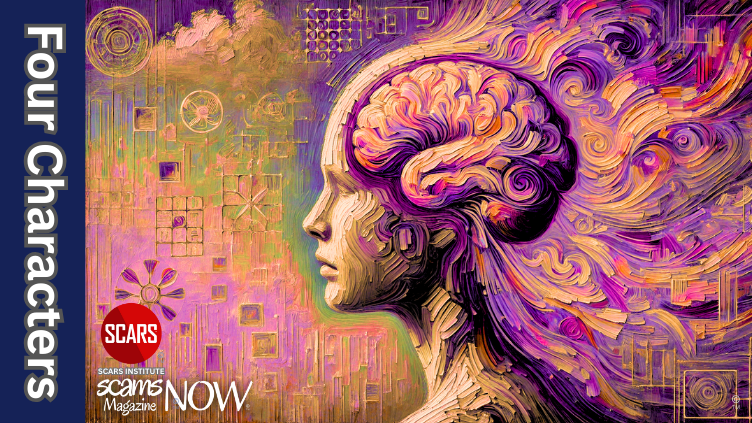




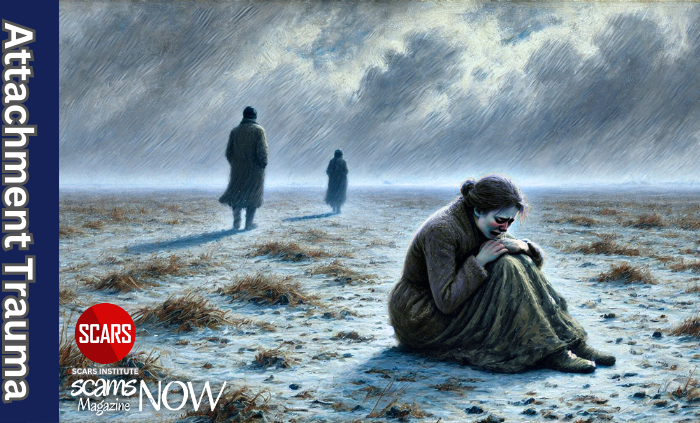
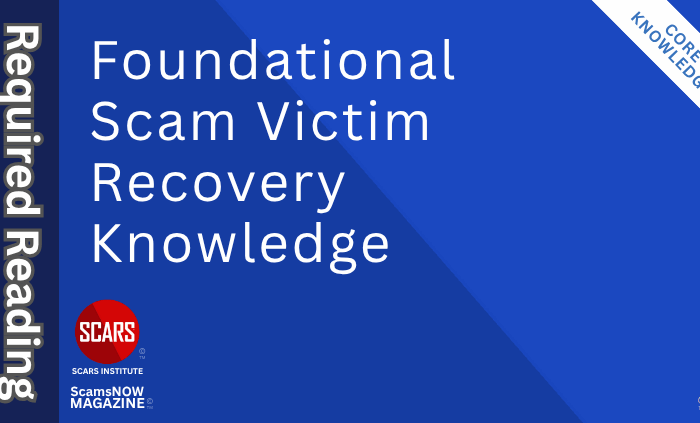


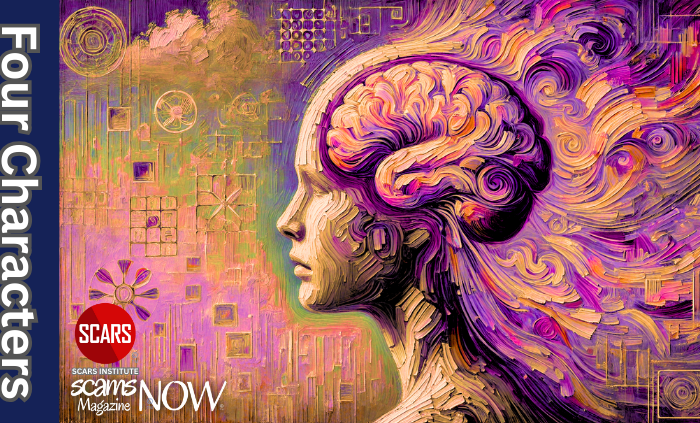




![scars-institute[1] An Essay on the Delusion of Safety - 2025](https://scamsnow.com/wp-content/uploads/2025/04/scars-institute1.png)
![niprc1.png1_-150×1501-1[1] An Essay on the Delusion of Safety - 2025](https://scamsnow.com/wp-content/uploads/2025/04/niprc1.png1_-150x1501-11.webp)

Life does not spare us from risky and dangerous situations. How should we deal with them? Among the philosophical answers, stoicism is closest to my heart: in every situation, accept what you cannot control, what is beyond your reach, and focus fully on what you can do. Great article. Thank you.